From inside (document excerpt):
Workshop manual 340 345 346XP 350 351 353 English Workshop manual Husqvarna 340/345/346XP/350/351/353 Contents Introduction . 2 Safety regulations 3 General instructions . 3 Special instructions 3 Special tools . 4 Technical data . 6 Construction and function . 8 Carburettor . 8 Troubleshooting . 10 Repair instructions . 12 Chain brake 12 Silencer 14 Chain catcher . 14 Stop switch . 15 Stop switch resistance measurement 15 Choke control . 16 Throttle trigger 17 Hand grip heater . 18 Starter assembly 21 Starter cord .
21 Recoil spring . 22 Ignition module testing 23 Ignition module and flywheel 23 Generator . 24 Centrifugal clutch 26 Oil pump . 27 Carburettor . 30 Carburettor pressure testing 33 Carburettor heater . 34 Air intake system . 35 Carburettor adjustment 37 Fuel tank . 38 Fuel filter . 39 Fuel hose 39 Piston and cylinder . 41 Decompression valve pressure testing . 42 Cylinder pressure testing . 44 Crankcase and crankshaft 45 Crankshaft bearings . 46 Repairing damaged threads . 49 Thread insert 49 Guide bar bolts . 49 Appendix A, Carburettor EPA models . 50 English 2 Introduction Arrangement of the manual This workshop manual can be used in two different ways. · To repair a specific sub-assembly on a chainsaw. · To dismantle and reassemble a complete chainsaw. Repairing a specific sub-assembly If a specific sub-assembly on the chainsaw needs to be repaired: 1. Look up the page referring to the relevant subassembly. 2. Follow the instructions under the headings: Removal/Dismantling Cleaning and inspection Refitting/Reassembly Dismantling and reassembling the entire chainsaw If the entire chainsaw is to be dismantled, follow the instructions under the heading “Removal/Dismantling “. Work through the manual and follow the instructions given in each section under the heading “Removal/Dismantling “. Then follow all the “Cleaning and inspection ” instructions in each section. Working from the back of the manual, follow all the instructions under the headings “Refitting/Reassembly ” in reverse order. Each of the sections covering removal/dismantling and refitting/reassembly include the relevant lubrication instructions and bolt torques for each stage of repair. Troubleshooting These pages describe the most common faults that affect a chainsaw. They are divided into four different groups with the most likely faults described first. Repair instructions The section that describes how to repair the chainsaw consists of detailed, step-by-step instructions. It explains in detail the special tools, lubricants and bolt torques that are needed when working on each component. This workshop manual covers the following chainsaw models: 340 345 346XP 350 351 353 Construction and function This chapter gives a simple description of the chainsaw carburettor and its various parts. English 3 Safety regulations General instructions This workshop manual gives detailed instructions on how to troubleshoot, repair and test a chainsaw. This section also describes the various safety precautions that should be taken when carrying out repairs. The workshop manual has been written for personnel who are assumed to have general experience of repairing and servicing chainsaws. Workshops where chainsaws are repaired must be equipped with safety equipment that meets local regulations. No-one should carry out repairs on a chainsaw until they have read and understood the contents of this workshop manual. Chainsaws are type-approved to meet the relevant safety legislation, but this only applies when the saw is fitted with the cutting equipment specified in the user’s manual. The fitting of any other equipment, or of accessories or parts that are not approved by Jonsered, could mean that the saw no longer meets these safety requirements and the person who carried out the work may be held responsible for its non-conformance. In this workshop manual the following boxes indicate where caution should be taken. Special instructions The fuel that is used in a chainsaw poses the following hazards: · The fuel and its fumes are toxic. · May cause irritation to skin or eyes. · May cause breathing difficulties. · Highly flammable. When using compressed air the air jet should never be pointed at the body. Air can be forced into the bloodstream and cause fatal injury. Wear ear protection when testing saws. After testing a saw do not touch the silencer until it has cooled down. The silencer gets very hot and you may burn yourself. Wear protective gloves when working on the silencer. The guide bar, chain and clutch cover (chain brake) must be fitted before the saw is started. If not, the clutch may come loose and cause injury. Poor chain lubrication can result in failure of the chain, which could cause serious or fatal injury. Take care to ensure that the spring inside the starter assembly does not fly out and cause injury. Wear eye protection. If the spring is under compression when the pulley is removed it could fly out and cause injury. Before removing the tensioning spring from the chain brake, ensure that the brake is in the on position, otherwise the spring may fly out and cause injury. After completing the repair the chain brake must be tested, see “Chain brake reassembly Operating test “. Always consider the fire risk. A chainsaw can produce sparks that could start a fire. Inspect the chain catcher and replace it if it is damaged. WARNING! The warning text warns of the risk of personal injury if the instructions are not followed. NOTE! The warning text warns of the risk of material damage if the instructions are not followed. English 4 Special tools
Wikipedia’s page for Husqvarna
Publisher: www.husqvarna.com


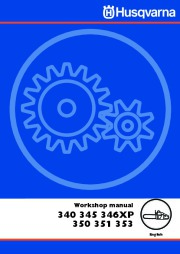 Husqvarna 340 345 346XP 350 351 353 Chainsaw Workshop Manual, 2003,2004,2005,2006 - 1 of 52
Husqvarna 340 345 346XP 350 351 353 Chainsaw Workshop Manual, 2003,2004,2005,2006 - 1 of 52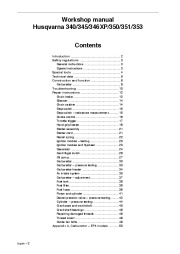 Husqvarna 340 345 346XP 350 351 353 Chainsaw Workshop Manual, 2003,2004,2005,2006 - 2 of 52
Husqvarna 340 345 346XP 350 351 353 Chainsaw Workshop Manual, 2003,2004,2005,2006 - 2 of 52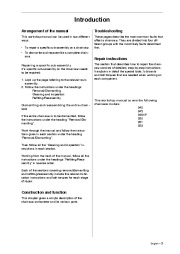 Husqvarna 340 345 346XP 350 351 353 Chainsaw Workshop Manual, 2003,2004,2005,2006 - 3 of 52
Husqvarna 340 345 346XP 350 351 353 Chainsaw Workshop Manual, 2003,2004,2005,2006 - 3 of 52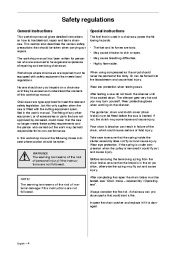 Husqvarna 340 345 346XP 350 351 353 Chainsaw Workshop Manual, 2003,2004,2005,2006 - 4 of 52
Husqvarna 340 345 346XP 350 351 353 Chainsaw Workshop Manual, 2003,2004,2005,2006 - 4 of 52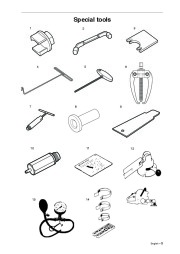 Husqvarna 340 345 346XP 350 351 353 Chainsaw Workshop Manual, 2003,2004,2005,2006 - 5 of 52
Husqvarna 340 345 346XP 350 351 353 Chainsaw Workshop Manual, 2003,2004,2005,2006 - 5 of 52 Husqvarna 340 345 346XP 350 351 353 Chainsaw Workshop Manual, 2003,2004,2005,2006 - 6 of 52
Husqvarna 340 345 346XP 350 351 353 Chainsaw Workshop Manual, 2003,2004,2005,2006 - 6 of 52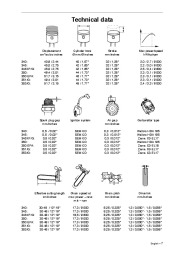 Husqvarna 340 345 346XP 350 351 353 Chainsaw Workshop Manual, 2003,2004,2005,2006 - 7 of 52
Husqvarna 340 345 346XP 350 351 353 Chainsaw Workshop Manual, 2003,2004,2005,2006 - 7 of 52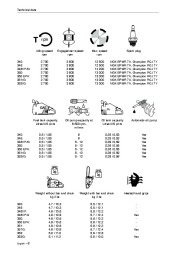 Husqvarna 340 345 346XP 350 351 353 Chainsaw Workshop Manual, 2003,2004,2005,2006 - 8 of 52
Husqvarna 340 345 346XP 350 351 353 Chainsaw Workshop Manual, 2003,2004,2005,2006 - 8 of 52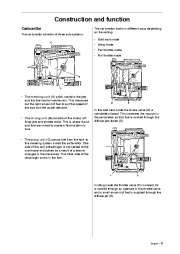 Husqvarna 340 345 346XP 350 351 353 Chainsaw Workshop Manual, 2003,2004,2005,2006 - 9 of 52
Husqvarna 340 345 346XP 350 351 353 Chainsaw Workshop Manual, 2003,2004,2005,2006 - 9 of 52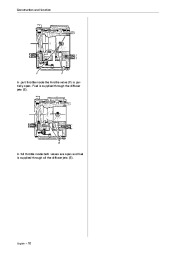 Husqvarna 340 345 346XP 350 351 353 Chainsaw Workshop Manual, 2003,2004,2005,2006 - 10 of 52
Husqvarna 340 345 346XP 350 351 353 Chainsaw Workshop Manual, 2003,2004,2005,2006 - 10 of 52